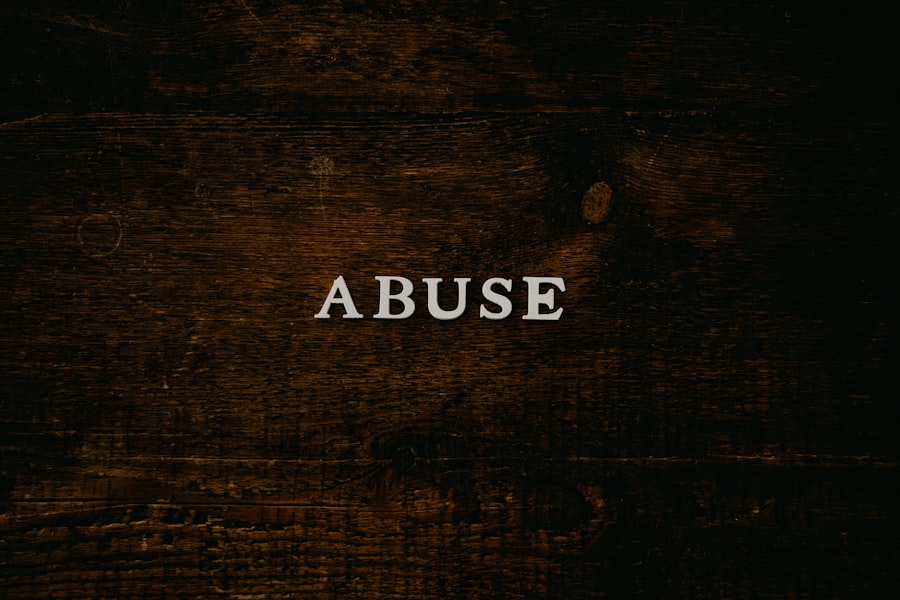Cult followers are often perceived as individuals who have lost their way, drawn into a world that seems foreign and extreme to outsiders. You might wonder what compels someone to join a group that operates outside the norms of society. The allure of cults can be powerful, offering a sense of belonging, purpose, and community that many people crave.
In a world where loneliness and disconnection are prevalent, the promise of acceptance and understanding can be irresistible. Cults often present themselves as havens for those seeking deeper meaning in their lives, making it easy for individuals to overlook the red flags that signal danger. As you delve deeper into the phenomenon of cults, it becomes clear that the followers are not merely misguided; they are often vulnerable individuals searching for answers.
Many cult members come from backgrounds marked by trauma, loss, or a lack of support. This vulnerability is exploited by cult leaders who promise salvation, enlightenment, or a sense of family. Understanding the dynamics of cult membership requires an exploration of the psychological, social, and emotional factors that draw people into these groups and keep them there.
Key Takeaways
- Cult followers are often drawn to charismatic leaders and the sense of belonging and purpose they offer.
- The psychology behind cult membership involves a combination of vulnerability, manipulation, and the need for identity and community.
- Charismatic leaders have a powerful influence on their followers, often using persuasive tactics to gain control and loyalty.
- Indoctrination and brainwashing play a significant role in shaping the beliefs and behaviors of cult members.
- Isolation and control tactics are used to maintain the loyalty and obedience of cult followers, often leading to emotional and psychological manipulation.
The Psychology Behind Cult Membership
The psychology of cult membership is complex and multifaceted. You may find it intriguing that many individuals who join cults do so during periods of personal crisis or transition. This could be a time of grief, a search for identity, or a desire for community.
The promise of transformation and enlightenment can be incredibly appealing, leading you to overlook the potential dangers associated with such groups. Moreover, cognitive dissonance plays a significant role in maintaining cult membership.
Once you commit to a group and its beliefs, it becomes increasingly difficult to question or challenge those beliefs without experiencing internal conflict. This psychological phenomenon can lead you to rationalize harmful behaviors or ideologies, making it easier to remain within the confines of the cult. The more invested you become—emotionally, socially, and sometimes financially—the harder it is to extricate yourself from the group’s influence.
The Influence of Charismatic Leaders

Charismatic leaders are often at the helm of cults, wielding immense power over their followers. You might be fascinated by how these individuals can captivate and manipulate large groups of people with their charm and persuasive abilities. They often present themselves as visionaries or prophets, claiming to possess unique insights or knowledge that others lack.
This charisma can create an almost magnetic pull, drawing individuals into the leader’s orbit and fostering a deep sense of loyalty. The relationship between a charismatic leader and their followers is often characterized by intense emotional bonds. You may find it unsettling how these leaders can exploit their followers’ vulnerabilities, using flattery and validation to reinforce their authority.
As you observe this dynamic, it becomes evident that the leader’s influence extends beyond mere admiration; it can morph into a form of dependency where followers feel they cannot function without the leader’s guidance. This dependency is a crucial factor in maintaining control over the group and ensuring that dissent is quashed.
The Role of Indoctrination and Brainwashing
| Aspect | Metrics |
|---|---|
| Duration of Indoctrination | Number of years spent in indoctrination programs |
| Effectiveness of Brainwashing | Percentage of individuals who exhibit changed beliefs or behaviors |
| Methods Used | Types of psychological techniques employed in indoctrination |
| Impact on Society | Statistics on societal influence and control through indoctrination |
Indoctrination is a key mechanism through which cults maintain control over their members. You might be surprised to learn that this process often begins subtly, with small changes in belief systems that gradually escalate over time. Cults employ various techniques to instill their ideologies, including repetitive messaging, isolation from outside influences, and emotional manipulation.
As you explore these methods, it becomes clear that indoctrination is not merely about convincing someone to adopt new beliefs; it’s about reshaping their entire worldview. Brainwashing, while often sensationalized in popular culture, is a real phenomenon that can occur within cults. You may find it alarming how easily individuals can be led to accept ideas that contradict their previous beliefs.
This process often involves breaking down an individual’s sense of self and replacing it with the group’s identity. As you consider this transformation, you might reflect on how powerful social dynamics can be in shaping one’s thoughts and behaviors. The combination of indoctrination and brainwashing creates an environment where questioning the group’s teachings becomes not only difficult but also dangerous.
The Impact of Isolation and Control
Isolation is a common tactic used by cults to maintain control over their members. You may recognize that when individuals are cut off from their support systems—friends, family, and society at large—they become more reliant on the group for emotional and social needs. This isolation can take many forms, from physical separation to emotional manipulation that discourages contact with outsiders.
As you think about this dynamic, it becomes clear how effective isolation can be in reinforcing loyalty and obedience. Control extends beyond mere physical isolation; it encompasses various aspects of daily life within the cult. You might find it striking how cults often impose strict rules governing behavior, communication, and even thoughts.
Members may be required to adhere to rigid schedules or participate in group activities that leave little room for personal autonomy. This level of control can create an environment where questioning or dissent is not only discouraged but actively punished. As you consider the implications of such control, you may begin to understand why leaving a cult can be such a daunting prospect for its members.
The Emotional and Psychological Manipulation Tactics

Emotional manipulation is a hallmark of cult dynamics, often employed to keep members compliant and loyal. You might be intrigued by how cult leaders use guilt, fear, and love as tools to control their followers’ emotions. For instance, they may instill fear about the outside world or consequences for leaving the group, creating an atmosphere where members feel trapped.
This fear can be compounded by feelings of guilt for questioning the group’s teachings or considering leaving. Additionally, love bombing is a common tactic used by cults to draw in new members and reinforce loyalty among existing ones. You may find it fascinating how this technique involves overwhelming individuals with affection and attention during their initial interactions with the group.
This creates an emotional high that can be addictive, making it difficult for individuals to recognize any negative aspects of the cult later on. As you reflect on these manipulation tactics, it becomes evident how deeply intertwined emotions are with the psychological mechanisms that keep individuals bound to cults.
The Experience of Leaving a Cult
Leaving a cult is often fraught with challenges and emotional turmoil.
The process of disengagement can be overwhelming; many former members experience feelings of loss, confusion, and betrayal as they grapple with their past experiences.
You may empathize with their struggle as they attempt to rebuild their lives outside the confines of the group. Moreover, the fear of retribution or ostracism from former friends within the cult can make leaving even more daunting. You might consider how this fear can create a sense of isolation for those who choose to break free from the group’s influence.
The emotional scars left by such experiences can linger long after leaving the cult, making it essential for former members to seek support as they navigate their new reality.
Healing and Recovery for Former Cult Members
Healing from the trauma of cult membership is a complex journey that requires time, patience, and support. You may find it encouraging that many former members have successfully rebuilt their lives after leaving cults, but this process often involves confronting painful memories and emotions. Therapy can play a crucial role in helping individuals process their experiences and develop healthier coping mechanisms.
As you consider this aspect of recovery, you might reflect on the importance of creating safe spaces for healing. Support groups specifically designed for former cult members can also provide invaluable resources during this transition period. You may appreciate how these groups foster a sense of community among individuals who share similar experiences, allowing them to connect on a deeper level.
Sharing stories and insights can help former members feel less isolated in their struggles and provide them with tools for moving forward.
Understanding the Appeal of Belonging to a Cult
The appeal of belonging to a cult lies in its promise of community and purpose—a desire that resonates deeply within many individuals. You might recognize that in an increasingly fragmented society, people often seek connection and meaning in their lives. Cults offer an enticing solution by providing a ready-made family where members feel valued and understood.
This sense of belonging can be particularly appealing during times of personal crisis or uncertainty. Additionally, cults often present themselves as havens for those disillusioned with mainstream society or traditional belief systems. You may find it compelling how these groups position themselves as alternatives that offer deeper truths or insights into existence.
This narrative can create an illusion of exclusivity—making members feel special for being part of something greater than themselves—further solidifying their commitment to the group.
The Dangers of Cult Membership
The dangers associated with cult membership are profound and far-reaching. You might be alarmed by how easily individuals can become ensnared in manipulative dynamics that compromise their autonomy and well-being. Cults often engage in exploitative practices that can lead to financial ruin, emotional trauma, or even physical harm.
As you consider these risks, it’s essential to recognize that not all cults are overtly violent; many operate under the guise of benevolence while still causing significant harm. Moreover, the long-term effects of cult membership can extend beyond individual experiences; they can ripple through families and communities as well. You may reflect on how relationships with loved ones can become strained or severed due to differing beliefs or loyalties after one member joins a cult.
Understanding these dangers underscores the importance of vigilance when it comes to recognizing potentially harmful groups.
The Importance of Education and Awareness
Education and awareness are crucial tools in combating the allure of cults and protecting vulnerable individuals from exploitation. You might appreciate how increasing public knowledge about the tactics used by cults can empower people to recognize red flags before becoming involved in such groups. By fostering open discussions about mental health, social dynamics, and critical thinking skills, society can create an environment where individuals are better equipped to make informed choices.
Moreover, supporting organizations dedicated to helping former cult members reintegrate into society is vital for promoting healing and recovery. You may find it inspiring how these organizations work tirelessly to raise awareness about the dangers of cults while providing resources for those affected by them. By prioritizing education and awareness efforts, we can collectively work towards reducing the prevalence of harmful groups while fostering resilience among individuals seeking connection and meaning in their lives.
In conclusion, understanding cult followers requires delving into the psychological mechanisms at play within these groups as well as recognizing the profound impact they have on individuals’ lives. By exploring themes such as charismatic leadership, indoctrination tactics, emotional manipulation, and the challenges faced when leaving a cult, you gain insight into why people become involved in such organizations—and what it takes for them to heal afterward. Ultimately, fostering education and awareness around these issues is essential for protecting vulnerable individuals from falling prey to harmful ideologies while promoting healthier avenues for connection and belonging.
In exploring the intricate dynamics of cult psychology, a fascinating documentary sheds light on the psychological mechanisms that drive individuals to join and remain in cults. This documentary delves into the persuasive tactics employed by cult leaders and the psychological vulnerabilities that make individuals susceptible to such influence. For those interested in further understanding the psychological underpinnings of cult behavior, a related article on Unplugged Psychology offers insightful perspectives. You can read more about these psychological aspects in the article available at Unplugged Psychology. This resource provides a deeper dive into the cognitive and emotional factors that contribute to the allure of cults, complementing the themes explored in the documentary.
WATCH NOW! 😱😱😱😱😱The Secret Psychology Cults Use on Anyone
FAQs
What is a cult psychology documentary?
A cult psychology documentary is a film or television program that explores the psychological dynamics of cults, including the tactics used by cult leaders to manipulate and control their followers, the experiences of former cult members, and the impact of cults on individuals and society.
What are some common themes in cult psychology documentaries?
Common themes in cult psychology documentaries include the charismatic nature of cult leaders, the use of mind control and manipulation techniques, the isolation of cult members from their families and communities, and the psychological and emotional impact of leaving a cult.
Are cult psychology documentaries based on real events?
Yes, many cult psychology documentaries are based on real events and feature interviews with former cult members, experts in psychology and sociology, and sometimes even the cult leaders themselves. These documentaries often aim to shed light on the inner workings of cults and the experiences of those who have been involved with them.
What is the purpose of cult psychology documentaries?
The purpose of cult psychology documentaries is to educate viewers about the psychological dynamics of cults, raise awareness about the dangers of cults, and provide insight into the experiences of individuals who have been involved with cults. These documentaries also aim to debunk myths and misconceptions about cults and offer support to those who may be affected by cult involvement.
Are cult psychology documentaries suitable for all audiences?
Cult psychology documentaries may contain sensitive and disturbing content, including discussions of manipulation, abuse, and trauma. As such, they may not be suitable for all audiences, particularly young or vulnerable viewers. It is important for viewers to consider their own emotional well-being before watching such documentaries.




